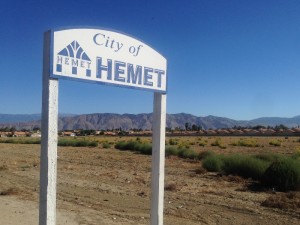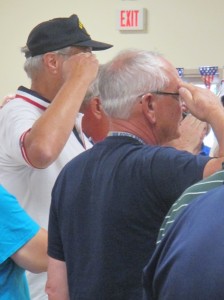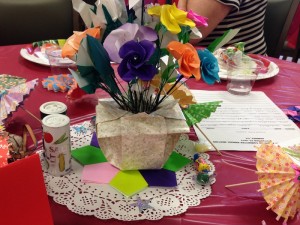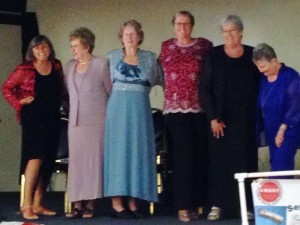We’re now in Hemet CA to attend the National Muster of S*M*A*R*T: the Special Military Active Recreation Travelers. This is the organization of military RVers with whom we caravanned to Alaska last summer, as well as attending other local musters with.
I don’t know if this area is technically desert or not, but it feels like desert, very dry and very hot. They call this area the “Inland Empire,” actually a designation for the spread of population east of L.A. 
The Soboba Cahuilla tribe of indigenous people used to inhabit the area in small hunter-gatherer groups, living too far inland to be of interest to Spanish soldiers, priests, or missionaries, who tended to view the desert as a place to avoid. They first encountered Spaniards in 1774, and Anglo-Europeans in the 1840s. The California gold rush of the 1850s brought an influx of settlers, and in 1877 the Cahuilla were moved to a reservation east of here. In 1895, Hemet Dam was completed on the San Jacinto River, creating Lake Hemet and providing a reliable water supply to the San Jacinto Valley.
Today’s inhabitants are mostly retirees in mobile-home parks who don’t want to or can’t afford to live in more urban areas of Southern California, along with the working people who provide services to them. We were hot before, in Coronado. Now we’re really in the oven. It’s been around 100 degrees every day. But it does cool down overnight, so that we’ve been able to continue with our bike rides almost every morning. Now that the Muster has started, we have lots of activities to do and people to talk with. We’ve been in S*M*A*R*T for two years now and are seeing some of the same people again, so gatherings are more fun and less stressful.
The Opening Ceremonies were Sunday night, and this group of veterans and spouses is of course quite patriotic. First there was a flag ceremony during which a former member of each of the services carried in his service’s flag, to the accompaniment of his service’s song; as one of only two Coasties here, Patrick carried the Coast Guard flag:




